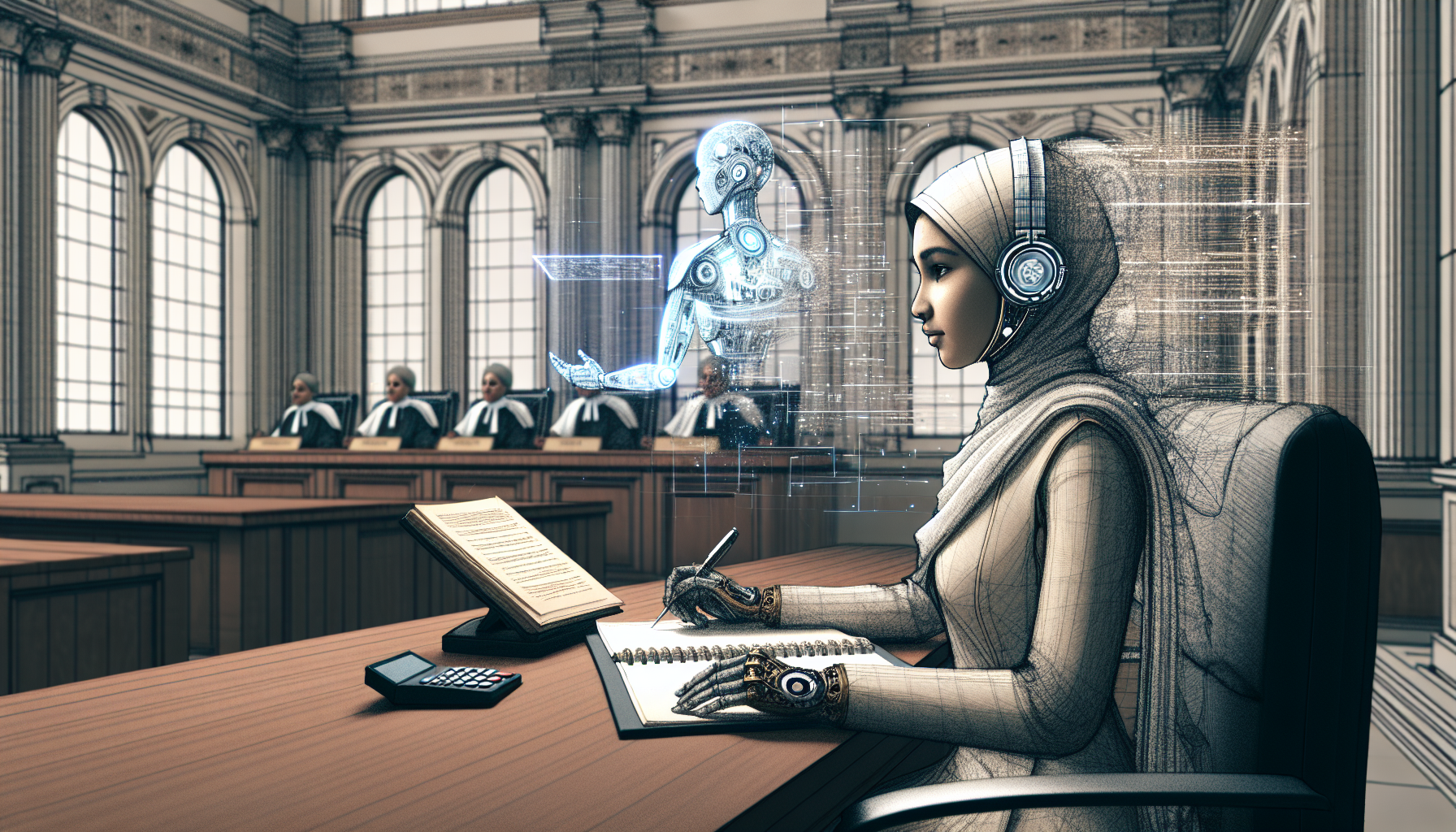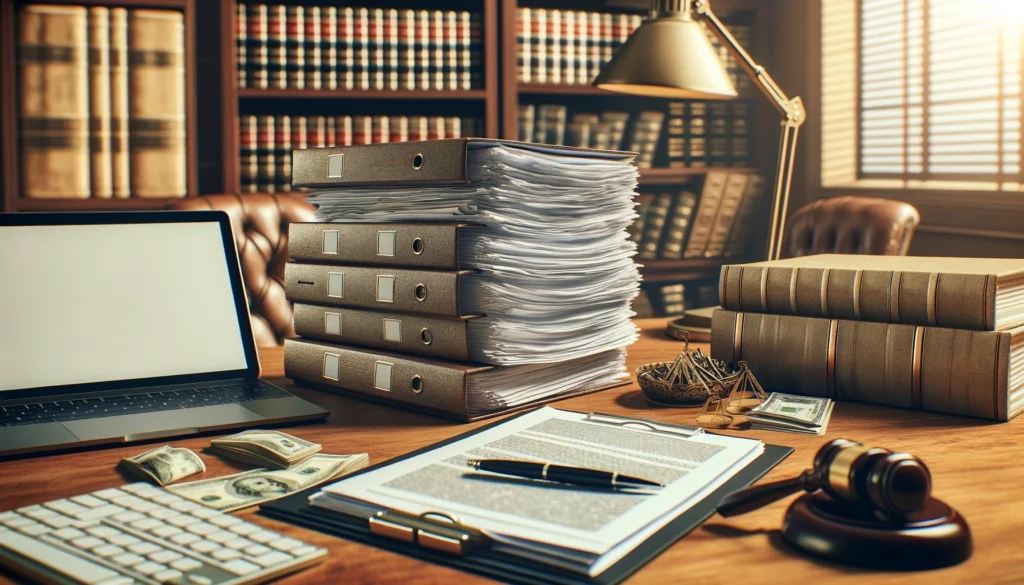
Laying the Groundwork: Understanding the Role of Jury Instructions
In the courtroom, precise and clear jury instructions are paramount. These directives guide jurors in understanding and applying the law to the facts they’ve observed, defining the legal standards they must use in their deliberations. Crafting these instructions is no small feat; paralegals often face the daunting task of drafting complex legal language that must be comprehensible to individuals without legal training.
The challenges are multi-fold: translating intricate legal principles into accessible language, ensuring compliance with procedural requirements, and maintaining neutrality to prevent bias. This intricate work is time-consuming and demands a high level of accuracy. Enter ChatGPT—a modern AI tool that can significantly streamline this process.
Now, let’s explore how ChatGPT can serve as a valuable assistant for paralegals in this critical task.
Enter ChatGPT: A Modern Assistant for Paralegals
ChatGPT, powered by advanced large language models, has emerged as a versatile assistant across various domains. Utilizing natural language processing, it can generate human-like text based on the prompts it receives. For paralegals, this means leveraging a tool that can draft, refine, and enhance legal documents, including jury instructions.
The advantages of using ChatGPT extend beyond mere text generation. It can help expedite research, suggest relevant case law, and even simulate various iterations of jury instructions based on nuanced legal principles. Its ability to quickly generate drafts allows paralegals to focus on higher-level review and customization, thus saving time and enhancing productivity.
However, the effectiveness of ChatGPT largely depends on how well it is prompted. In the next section, we’ll delve into the art of crafting effective prompts for this powerful tool.
Also read:
The Power of Prompts: Crafting Effective Commands
Creating productive prompts is a fundamental aspect of leveraging ChatGPT effectively. A well-crafted prompt provides clarity and detail, guiding the AI to generate precise and relevant output.
Fundamentals of Productive Prompts:
- Specificity: Clearly define what you need. Instead of “Draft a jury instruction,” specify “Draft a jury instruction for a personal injury case involving negligence.”
- Context: Provide relevant background information. For instance, “Generate jury instructions considering the plaintiff claims the defendant’s negligence led to a car accident.”
- Detail: Detail the required legal standards or elements. Example: “Include the four elements of negligence: duty, breach, causation, and damages.”
Examples of Basic Prompts:
- “Draft a simple jury instruction for a slip and fall case.”
- “Generate a standard instruction for determining credibility of witnesses in a personal injury trial.”
For more tailored and nuanced instructions, detailed prompts can help:
- “Provide a jury instruction for a personal injury case involving medical malpractice, including standard of care and expert testimony requirements.”
- “Draft an instruction addressing comparative negligence rules in a bicycle accident case where the injured plaintiff was partially at fault.”
Next, we explore advanced techniques to refine prompts and enhance ChatGPT’s output for drafting jury instructions.
Also read:
Turbocharging the Process: Advanced Techniques for Prompting ChatGPT
To maximize the quality of output from ChatGPT, consider utilizing advanced techniques in your prompts, such as adding context, incorporating legal jargon accurately, and breaking down complex legal concepts.
Utilizing Context: Providing comprehensive context can significantly improve the accuracy of ChatGPT’s generated text. Example: “Generate a jury instruction for a case involving a rear-end car collision, where the plaintiff alleges whiplash injury due to defendant’s failure to maintain a safe distance.”
Incorporating Legal Jargon: While the language must be digestible for jurors, incorporating accurate legal terminologies can guide ChatGPT to produce more precise outputs. Example: “Draft an instruction focusing on punitive damages in a personal injury case involving egregious misconduct by the defendant.”
Breaking Down Complex Legal Concepts: To ensure clarity, breakdown intricate legal requirements into simpler components that ChatGPT can interpret effectively. For instance, “Create a jury instruction that explains the elements and burden of proof for establishing causation in a medical malpractice claim.”
By strategically structuring the prompts, paralegals can ensure that the generated content closely aligns with legal standards and case-specific nuances. Let’s now discuss the collaborative aspect of working with ChatGPT to refine these drafts further.
Also read:
Collaborative Drafting: Working Hand-in-Hand with ChatGPT
Once ChatGPT generates a draft of the jury instructions, paralegals must review and integrate these outputs with existing legal frameworks to ensure accuracy and compliance.
Integration and Refinement: Extracting the generated text and embedding it within the broader context of case documents is crucial. This involves blending ChatGPT’s output with relevant legal citations, case law, and statutory references. Paralegals should carefully review the output to ensure it meets jurisdictional requirements and adjust the language as necessary to align with local court standards.
Compliance and Quality Assurance: It’s essential to ensure that the instructions are compliant with jurisdictional norms. This involves double-checking the legal principles employed in the instructions against authoritative legal sources and court precedents.
Through this collaborative process, paralegals can efficiently refine and perfect the jury instructions, balancing AI-generated content with human expertise. Next, let’s discuss how this collaboration enhances speed and precision, offering significant time-saving benefits.
Also read:
Speed and Precision: Time-Saving Features for Paralegals
ChatGPT isn’t just a tool for drafting; it offers several features that significantly enhance the efficiency of legal work.
Automating Repetitive Tasks: ChatGPT can handle the generation of standard instructions, allowing paralegals to automate repetitive drafting tasks. This automation frees up time for more complex and strategic matters.
Efficiently Managing Large Volumes of Information: With the ability to quickly sift through and summarize large volumes of case-specific information, ChatGPT enables paralegals to keep track of salient details without manually combing through data.
Enhancing Capabilities with Tools and Plugins: Integrating ChatGPT with legal research tools and document management systems can bolster its functionality. Plugins can help in managing citations, formatting documents, and ensuring consistency across various legal texts.
After leveraging these time-saving features, paralegals can focus on the final touches to ensure clarity and comprehensiveness in the jury instructions. Let’s explore these final review techniques next.
Also read:
Final Touches: Ensuring Clarity and Comprehensiveness
Finalizing jury instructions involves meticulous review and edits to ensure they are both clear and comprehensive.
- Review and Edit: Conduct thorough reviews to ensure that every aspect of the instructions is legally sound and clearly articulated.
- Feedback Loops: Establish feedback loops with senior attorneys or other paralegals to catch any potential ambiguities or errors, thereby continually improving the quality of the instructions.
As with all legal documents, precision and clarity are imperative to avoid misunderstandings or appeals based on flawed instructions.
With these final touches, the jury instructions are expertly crafted and ready for the courtroom. Looking ahead, what might the future hold for AI in legal practices?
Also read:
Looking Ahead: Evolving Legal Practices with AI Assistance
The integration of AI tools like ChatGPT into legal practices is only the beginning. As these tools evolve, they promise to offer more sophisticated assistance, potentially encompassing predictive analysis, legal research automation, and even real-time trial support.
This evolution encourages legal professionals to continually adapt and integrate these technologies, fostering a culture of innovation within legal fields. The next immediate steps to this end are within your reach.
Let’s explore some resources that can guide you in leveraging ChatGPT more effectively.
Also read:
Resources and Next Steps
To optimize the use of ChatGPT in your legal work, consider the following resources and steps:
- Further Reading: Explore guides and tutorials on creating effective ChatGPT prompts and integrating AI into legal processes.
- Tools and Plugins: Investigate plugins that enhance ChatGPT’s functionality, such as citation management tools and legal research databases.
- Proactive Integration: Begin incorporating ChatGPT into daily tasks, starting with drafting and extending to more complex legal research and analysis.
By taking these steps, legal professionals can ensure they are at the forefront of technological advancements in their field.
Finally, let’s sum up the transformative potential of ChatGPT in legal work.
Also read:
Conclusion: Embracing the Digital Age in Legal Work
ChatGPT offers an array of benefits for legal professionals, from drafting precise jury instructions to automating repetitive tasks. By mastering effective prompting techniques and leveraging advanced features, paralegals can significantly enhance their efficiency and accuracy.
As the legal profession continues to evolve, embracing AI tools like ChatGPT will be crucial in staying competitive and delivering high-quality legal services. The role of AI is not just a futuristic concept; it is an invaluable resource shaping the present and future of legal practices.
Ultimately, the effective integration of ChatGPT into legal workflows represents a significant step towards a more efficient, accurate, and advanced legal profession.


